MEDICAL AESTHETICS
Natural and unnatural factors, including aging, may cause the skin to lose its youthful look and deform over time. Medical aesthetic treatments allow people who are displeased with their looks to get treatments without invasive operations.
What is Medical Aesthetics?
Medical aesthetics, or aesthetic medicine, is a term that refers to the area of medicine focusing on procedures that alter the cosmetic appearance of human body. Medical aesthetic applications are procedures that are aimed at repairing physical wear and tear caused by the effects of environmental factors, hereditary characteristics, aging, stress, poor life and eating habits or smoking on the skin. These prodecures are mostly successful in achieving the desired aesthetic look.
Medical aesthetic services, which are performed using a variety of methods and devices, can be regenerative as well as completely change the structure of a part of the body. Most of the clients undergo these procedures in order to achieve or regain a healthier and more natural look while avoiding stressful, and sometimes risky, surgeries or general anesthesia.
Medical Aesthetics Treatments
The use of non-invasive or minimally invasive procedures and methods to satisfy the needs of clients has been becoming more popular. Facelift and botox operations are the most well-known kinds of medical aesthetic treatments. Facelifts are primarily preferred to eliminate skin wrinkles caused by age, while botox injections are used to provide a fuller and more dynamic look on the cheek and lip areas. With treatments that mostly involve subcutaneous injections, it is possible to address a range of aesthetic grievances at the same time.
Some other medical aesthetic treatments include the following:
- Skin rejuvenation
- Under-eye treatment
- Mesotherapy
- Crack and spot treatment
- Professional skincare
- Cellulite treatment
- Laser hair removal
- Dermal fillers
- Filling applications such as lip fillers
Medical Aesthetic Devices
Medical aesthetic devices refer to any medical equipment used for the purpose of correction or improvement of the body's appearance or function. The medical aesthetic devices market is classified based on the kind of devices, the procedures in which they will be used and their fuctions. The market for medical aesthetic devices are expected to gain more value; caused by the rise in minimally invasive treatments and increasing awareness of cosmetic operations. Furthermore, technological advancements in the medical industry are expected to increase demand for medical aecthetic devices in the coming years.
Why Are Medical Aesthetics Popular?
A large part of the fast growth of medical aesthetics on a global scale may be attributed to the increasing demand from patients for non-surgical rejuvenation techniques. Medical aesthetic procedures are elective, that is, they are not used to cure illnesses. However, with information on cosmetic procedures becoming more easily accessible, clients have embraced medical cosmetic treatments as they realize they can achieve their desired aesthetic appereance quickly and without undergoing risky surgeries.
Other reasons for the popularity of medical aesthetic operations include the fact that there is almost no difficulty returning to normal life after these procedures, thanks to modern methods and technology. Another factor affecting the decision of clients is the price point; the cost of medical aesthetic procedures is relatively more affordable than plastic surgeries. However, keep in mind that prices may change according to the medical aesthetics clinic you prefer.
How to Do Medical Aesthetics
The area of the body where a client is dissatisfied with its look is identified and evaluated under the supervision of a professional. After conducting a series of tests, the medical aesthetician or doctor determines whether the individual is suitable for undergoing a cosmetic procedure. Depending on the outcome of the operation, the client may be able to return to his or her normal activities in a couple of days.
When it comes to medical aesthetics, operations such as fillers, botox, dermapen and platelet-rich plasma (PRP) are among the most well-known. All of these treatments are medical aesthetic approaches used to achieve a variety of aesthetic goals. The risks and consequences associated with treatments are minimal, if they are done by experts in a safe and hygenic environment. Having these surgeries done by unskilled personnel and surgeons, on the other hand, may result in long-lasting harm.

